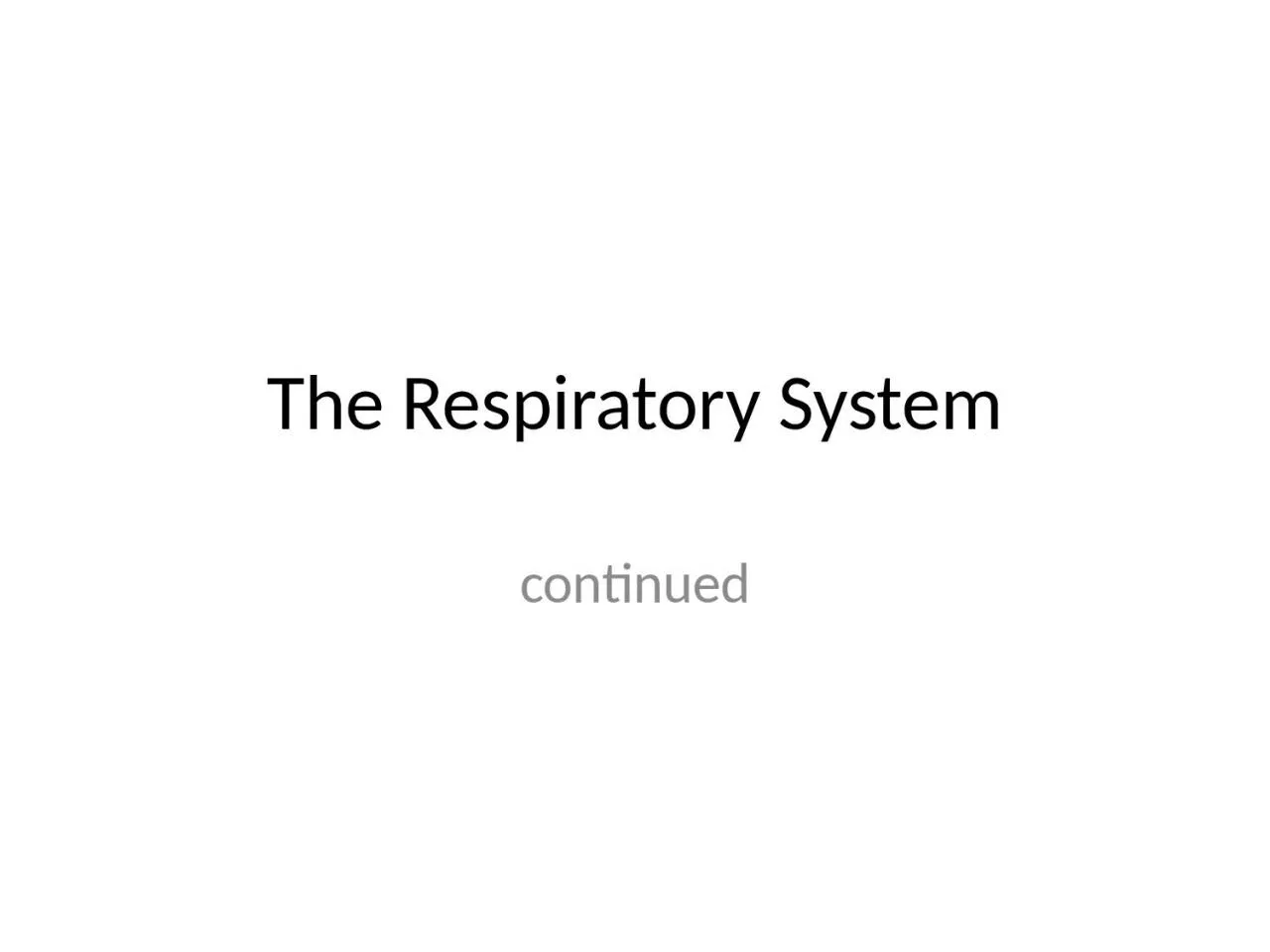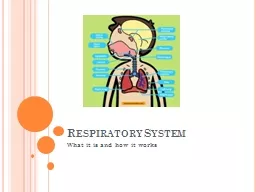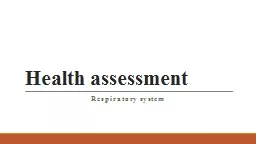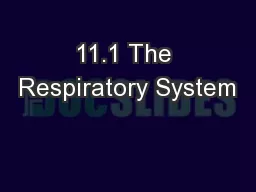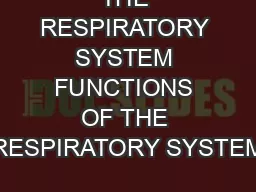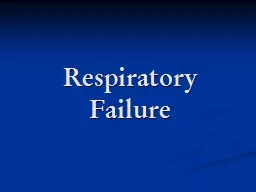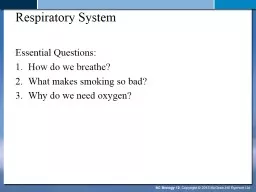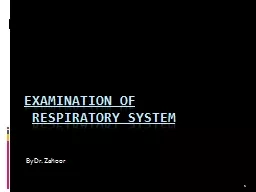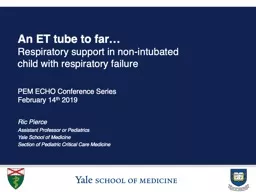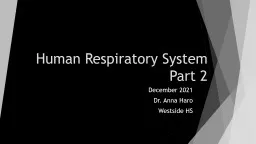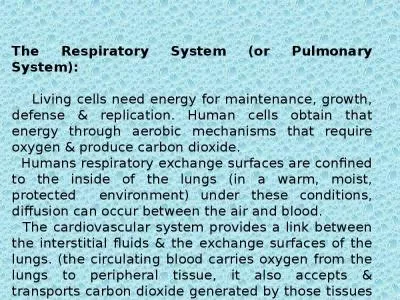PPT-The Respiratory System continued
Author : daniella | Published Date : 2024-03-13
The Process of Gas Exchange The exchange of oxygen gas and carbon dioxide gas occurs at the alveoli This area has a rich supply of capillaries that allow for the
Presentation Embed Code
Download Presentation
Download Presentation The PPT/PDF document "The Respiratory System continued" is the property of its rightful owner. Permission is granted to download and print the materials on this website for personal, non-commercial use only, and to display it on your personal computer provided you do not modify the materials and that you retain all copyright notices contained in the materials. By downloading content from our website, you accept the terms of this agreement.
The Respiratory System continued: Transcript
The Process of Gas Exchange The exchange of oxygen gas and carbon dioxide gas occurs at the alveoli This area has a rich supply of capillaries that allow for the exchange of oxygen and carbon dioxide between the circulatory system and the respiratory system Air that enters the bronchial tubes is rich in oxygen and therefore is needed by the cells of the body The oxygen diffuses from the alveoli into the capillary The capillaries contain red blood cells that contain the iron rich protein . By Drew Hilliard and Laura Arneson. Respiratory Vocabulary. Respiratory: of, related to, or affecting respiration, or the organs of respiration.. Chemotherapy: the treatment of disease by use of chemical substances.. What it is and how it works. What is it?. The respiratory system is a system of organs in the human body that’s main task is to perform . respiration. . It is composed of 10 separate organs.. Respiration is the act or process of breathing.. R. espiratory . system. Introduction. Respiratory system. Exchange of gases in the body. Intake of oxygen and release of carbon dioxide. Central nervous system. Functions. Maintains acid–base balance. The main function of the . respiratory system. is to allow oxygen from the air to enter the blood and carbon dioxide from the blood to exit into the air.. Ventilation. , another term for breathing, includes both inspiration (inhalation) and expiration (exhalation).. Lab 7. Lab 7 Activities. Biopac. L08-Respiratory Cycle 1: . Pneumography. . PhysioEx. Respiratory System Mechanics (computer simulations of spirometry) . Respiratory System Structure. Respiratory System Muscles. Transports air into the lungs and facilitates the diffusion of oxygen into the blood stream. Receives carbon dioxide from the blood and exhales it. Organs of the Respiratory system. Slide 13.1. Copyright © 2003 Pearson Education, Inc. publishing as Benjamin Cummings. La gamme de thé MORPHEE vise toute générations recherchant le sommeil paisible tant désiré et non procuré par tout types de médicaments. Essentiellement composé de feuille de morphine, ce thé vous assurera d’un rétablissement digne d’un voyage sur . Defined as the impairment of the lung’s ability to maintain adequate oxygen and carbon dioxide homeostasis.. Respiratory Failure - Definition. PaO. 2. < 60 mm Hg. and/or. PaCO. 2. > 50 mm Hg. How do we breathe?. What makes smoking so bad?. Why do we need oxygen?. The respiratory system works with the circulatory system in the following 4 areas of homeostatic functions:. Breathing: . exchange of air in and out of . By Dr. Zahoor. Respiratory System. General Inspection. Respiratory rate. – count per minute or for 30 seconds and multiply by 2. Examine the patient for . . - . Signs of respiratory distress. Students will understand how the body's systems work together to perform life functions. . 4. 3. 2. 1. 0. I can explain in detail how the organs and organ systems in the body work together to perform a vital function. I can also relate them to another working system . PEM ECHO Conference Series. February 14. th. 2019. Ric Pierce. Assistant Professor or Pediatrics. Yale School of Medicine. Section of Pediatric Critical Care Medicine. Disclosures . I have no relevant financial interests to disclose. Part 2. December 2021. Dr. Anna Haro. Westside HS. LEARNING Objectives . TEKS: . §130.231.(. c. )(1)(A, & B) and . §130.231.(. c. )(2)(A, B, C, F, & G) & (3)(B). Students will apply knowledge of human and cellular biology.. Living cells need energy for maintenance, growth, defense & replication. Human cells obtain that energy through aerobic mechanisms that require oxygen & produce carbon dioxide.. Humans respiratory exchange surfaces are confined to the inside of the lungs (in a warm, moist, protected environment) under these conditions, diffusion can occur between the air and blood..
Download Document
Here is the link to download the presentation.
"The Respiratory System continued"The content belongs to its owner. You may download and print it for personal use, without modification, and keep all copyright notices. By downloading, you agree to these terms.
Related Documents

